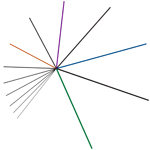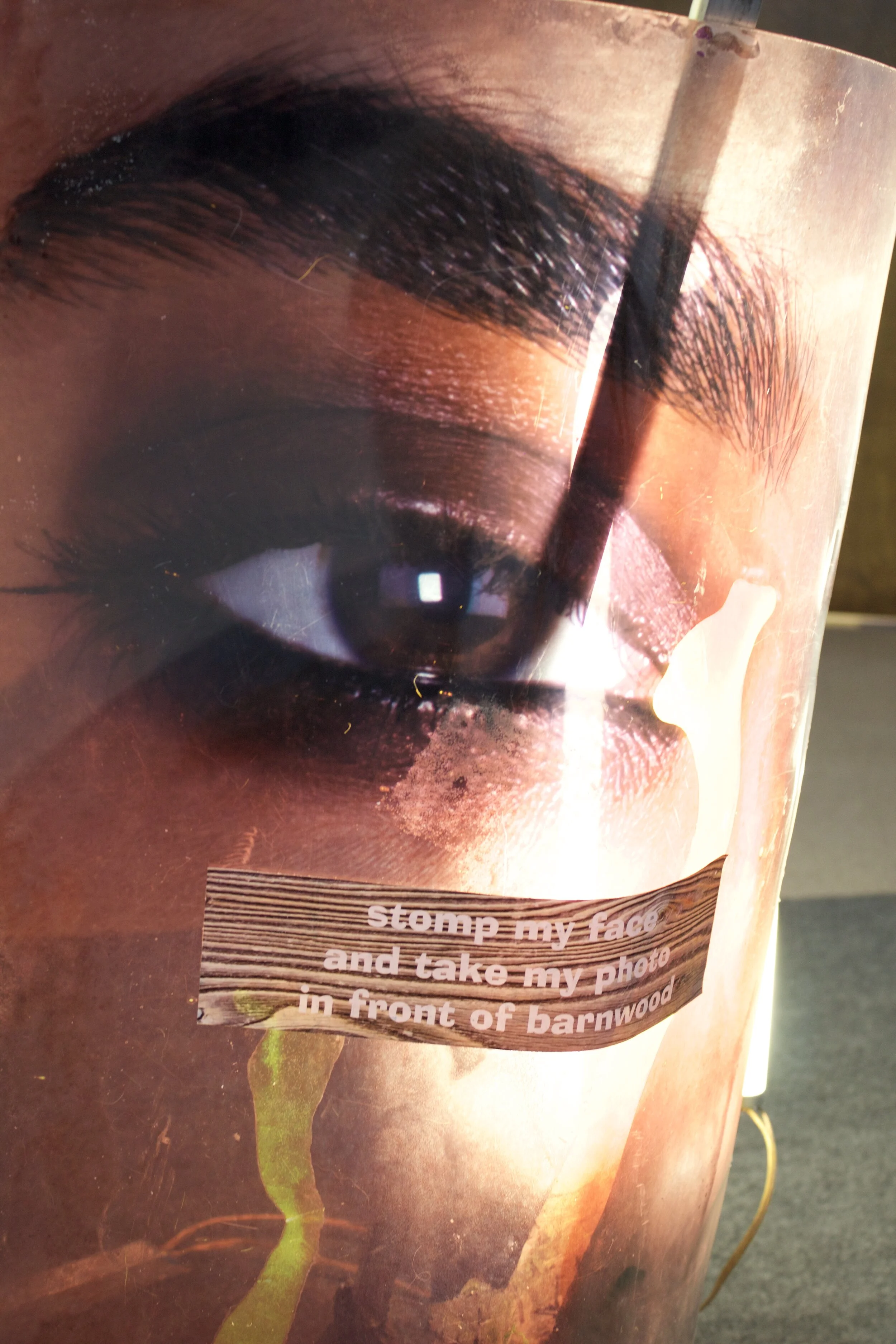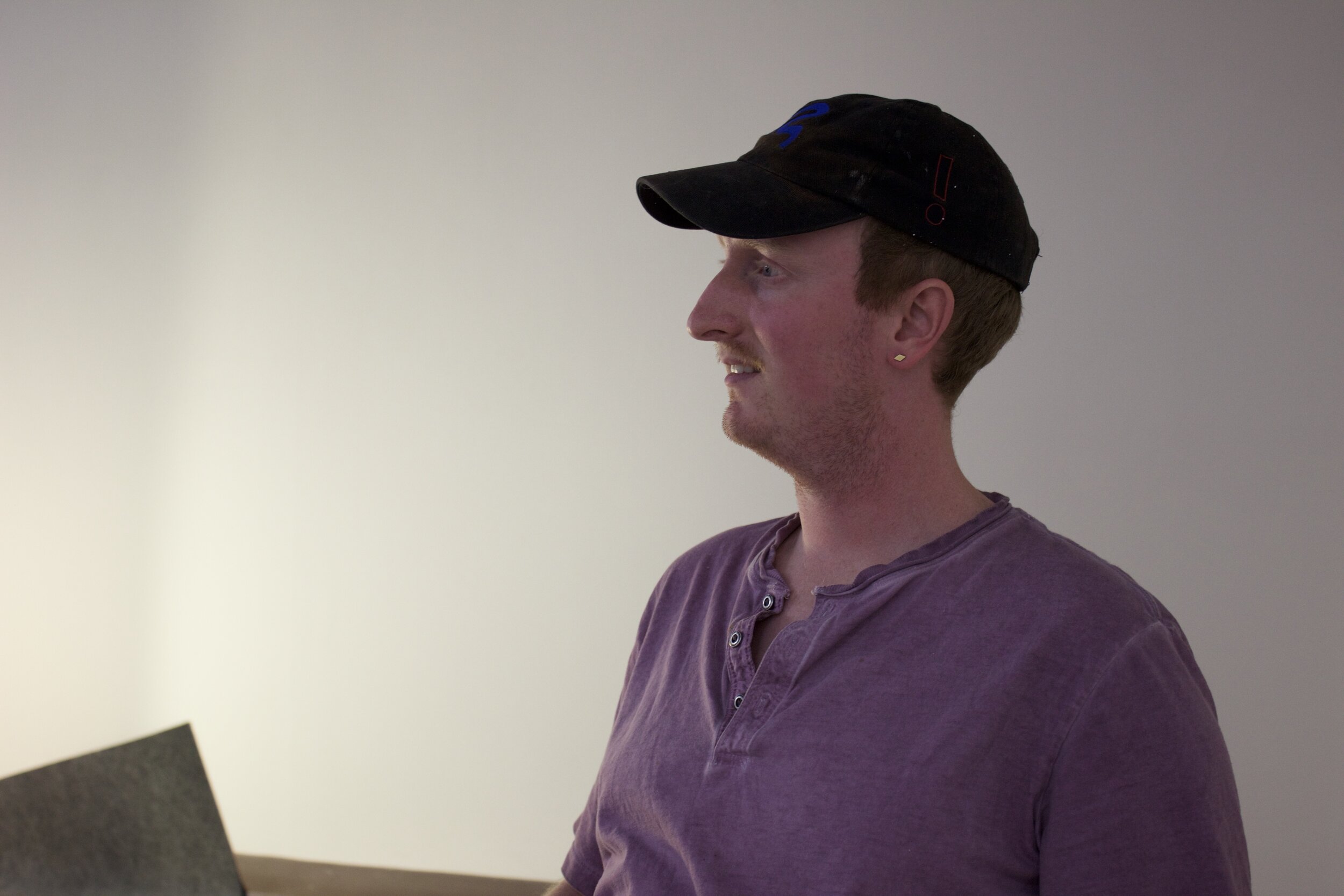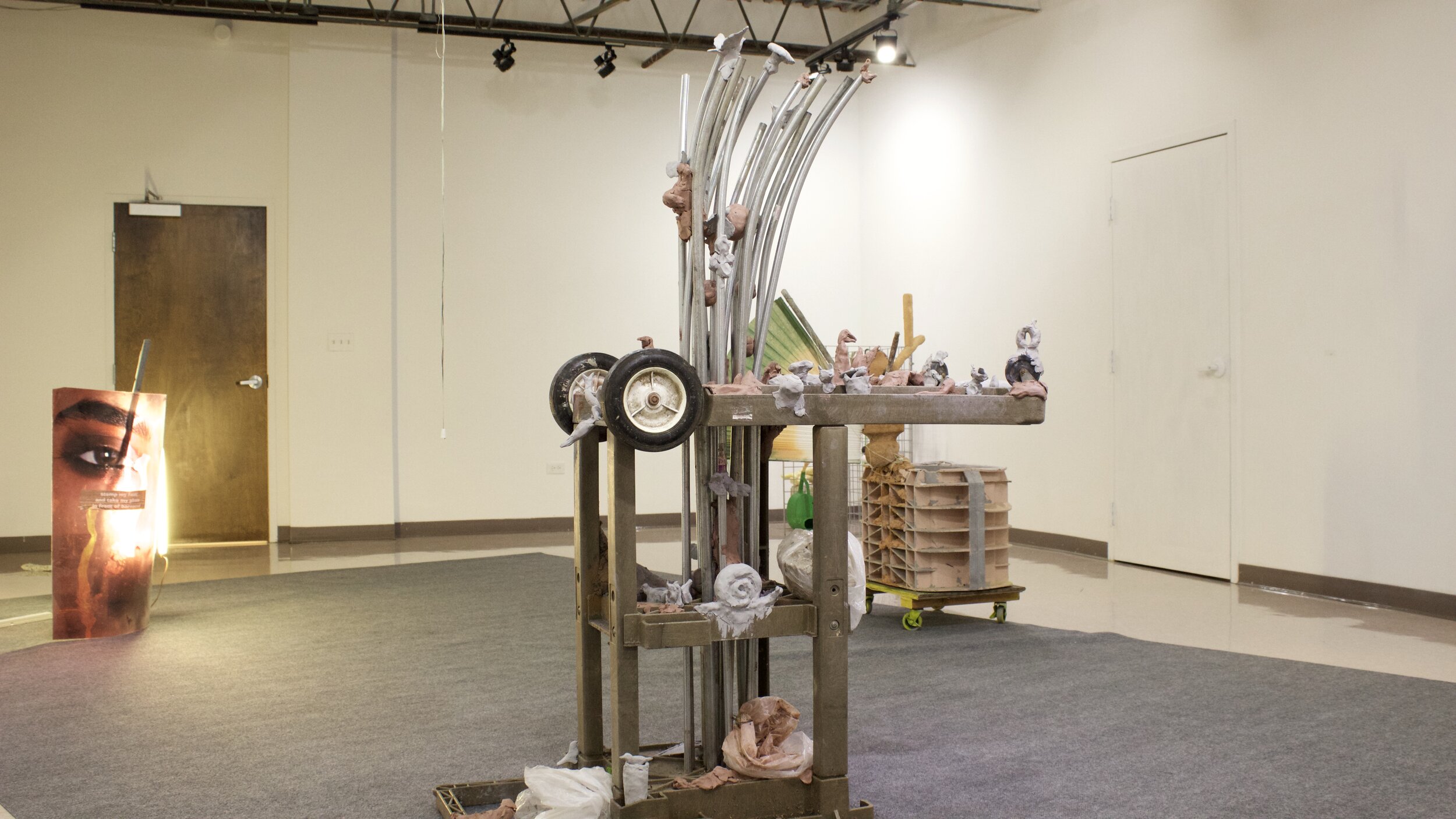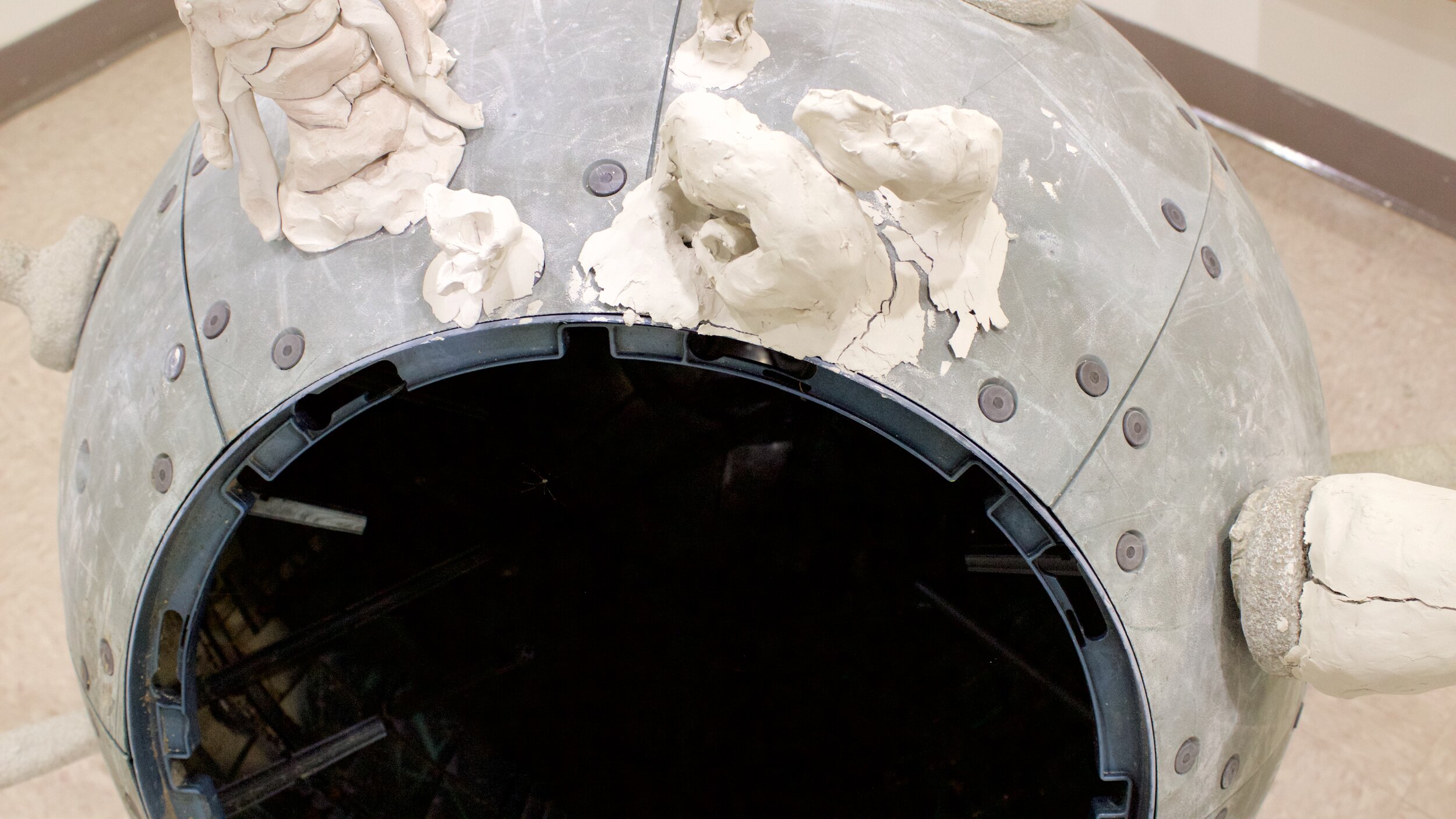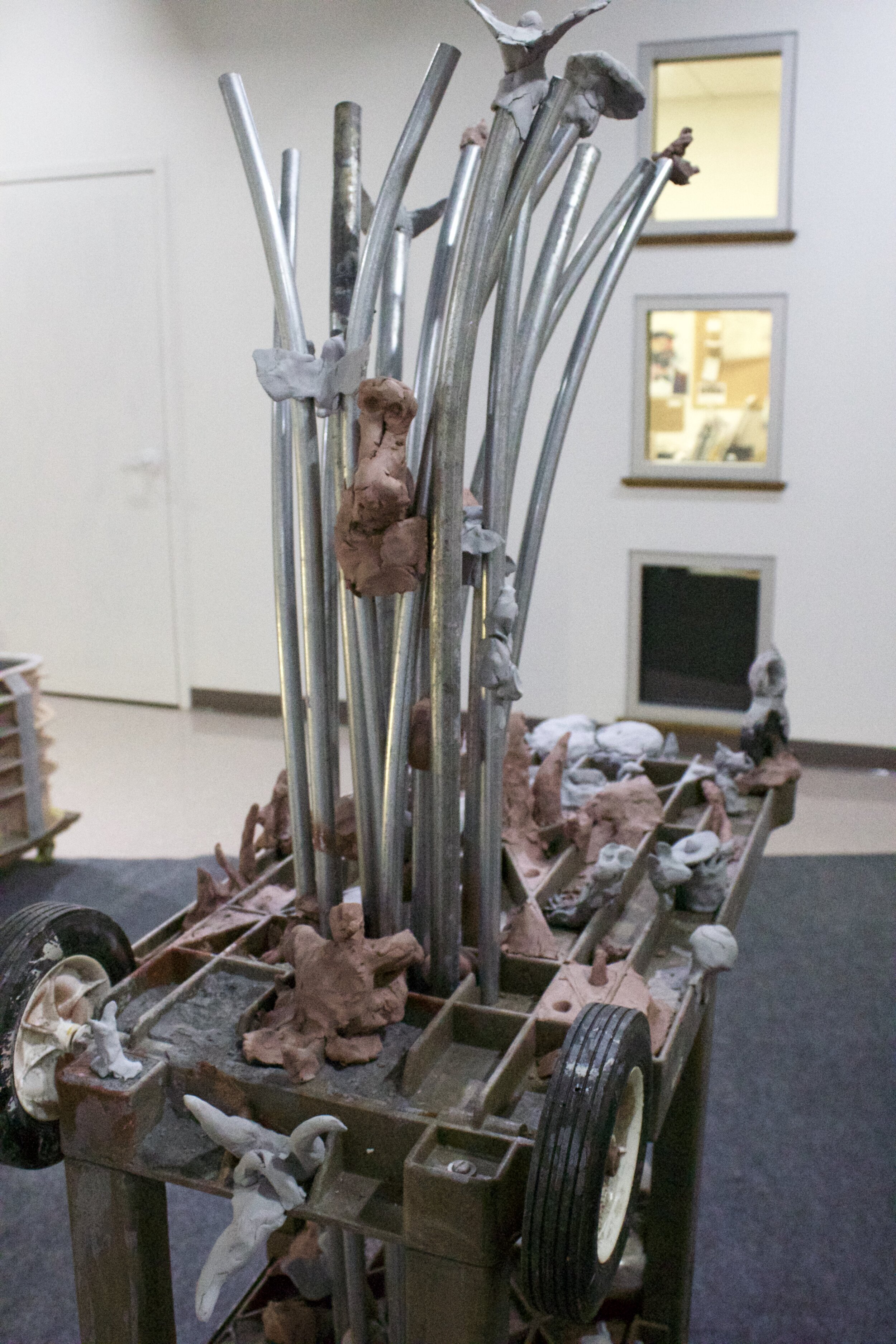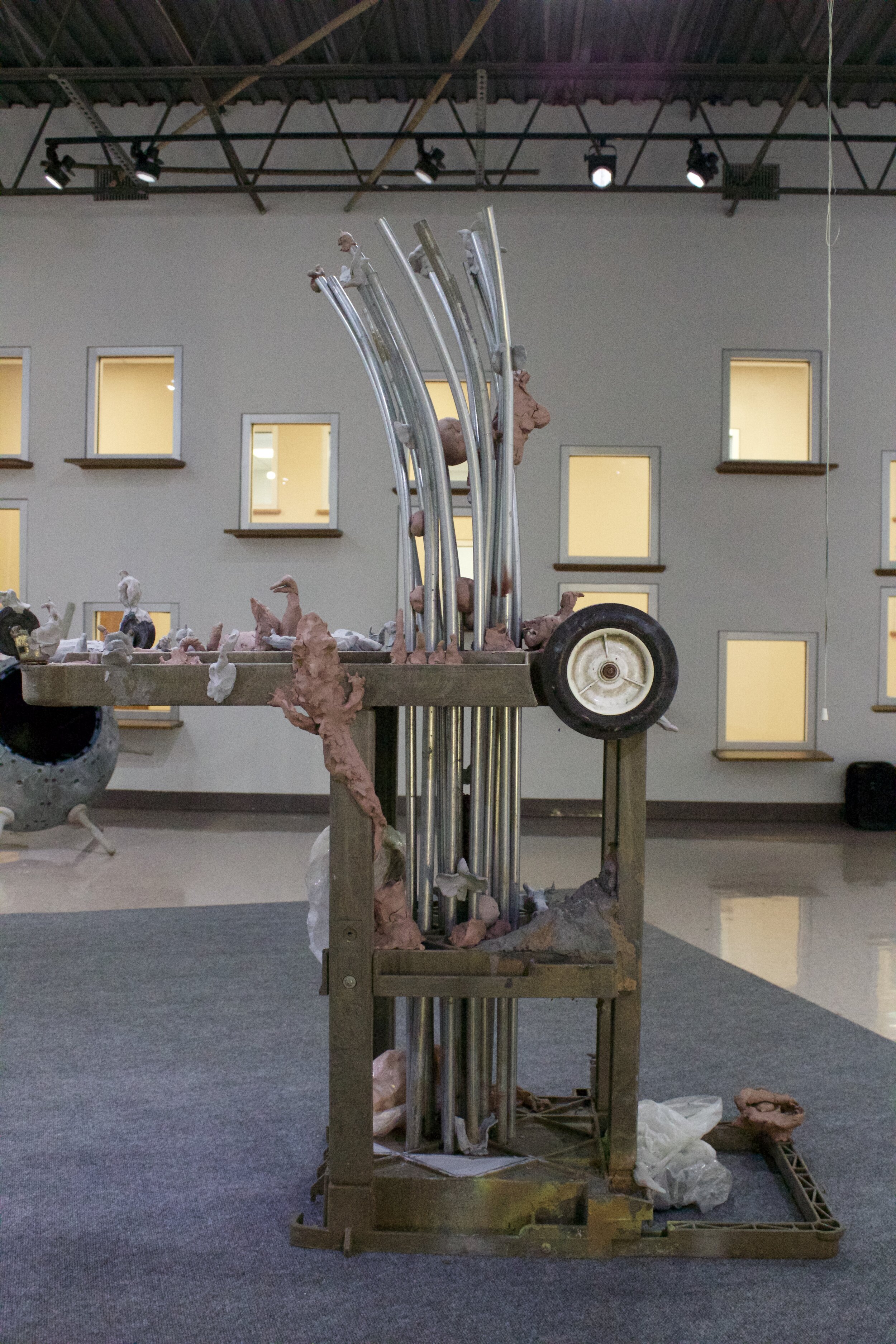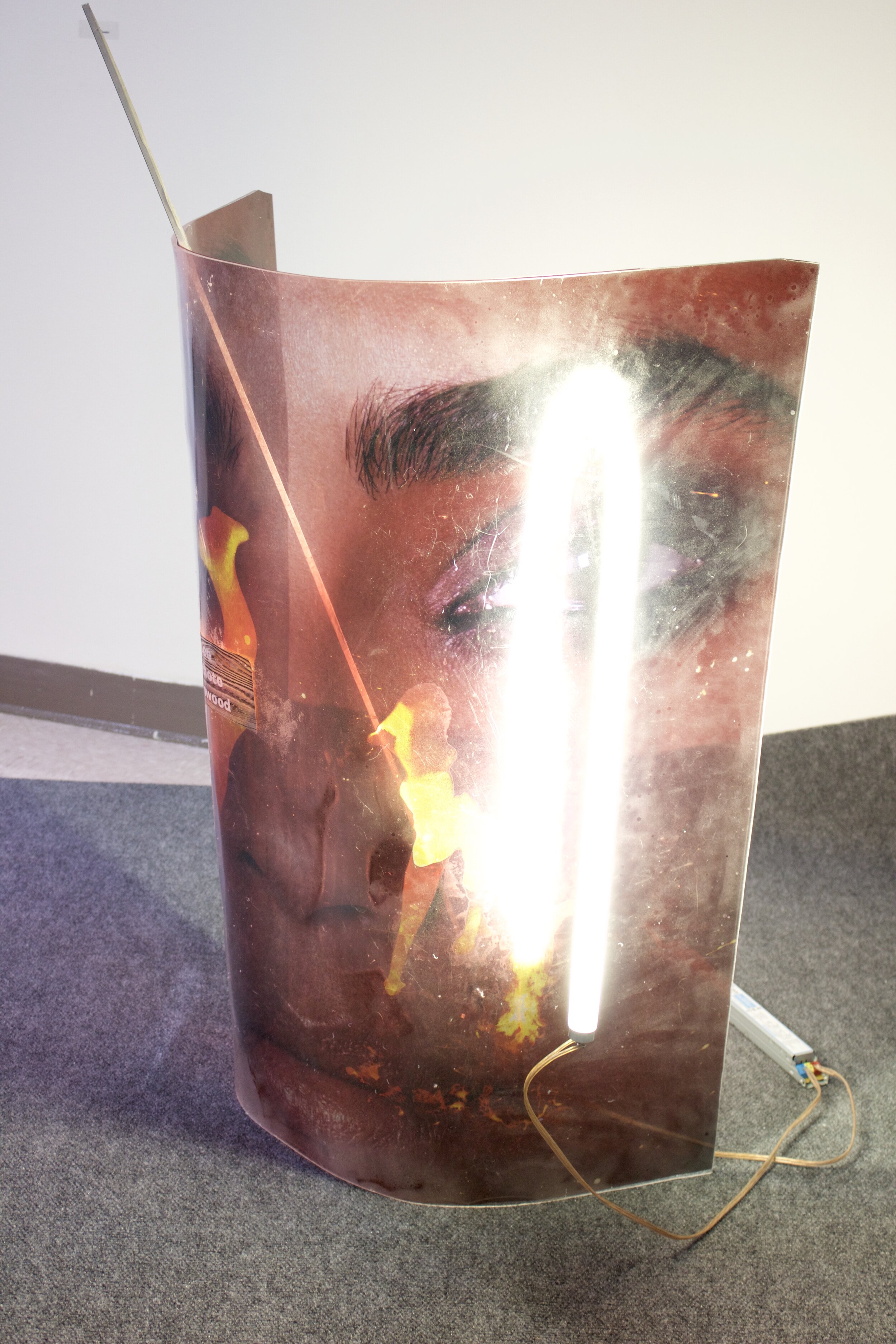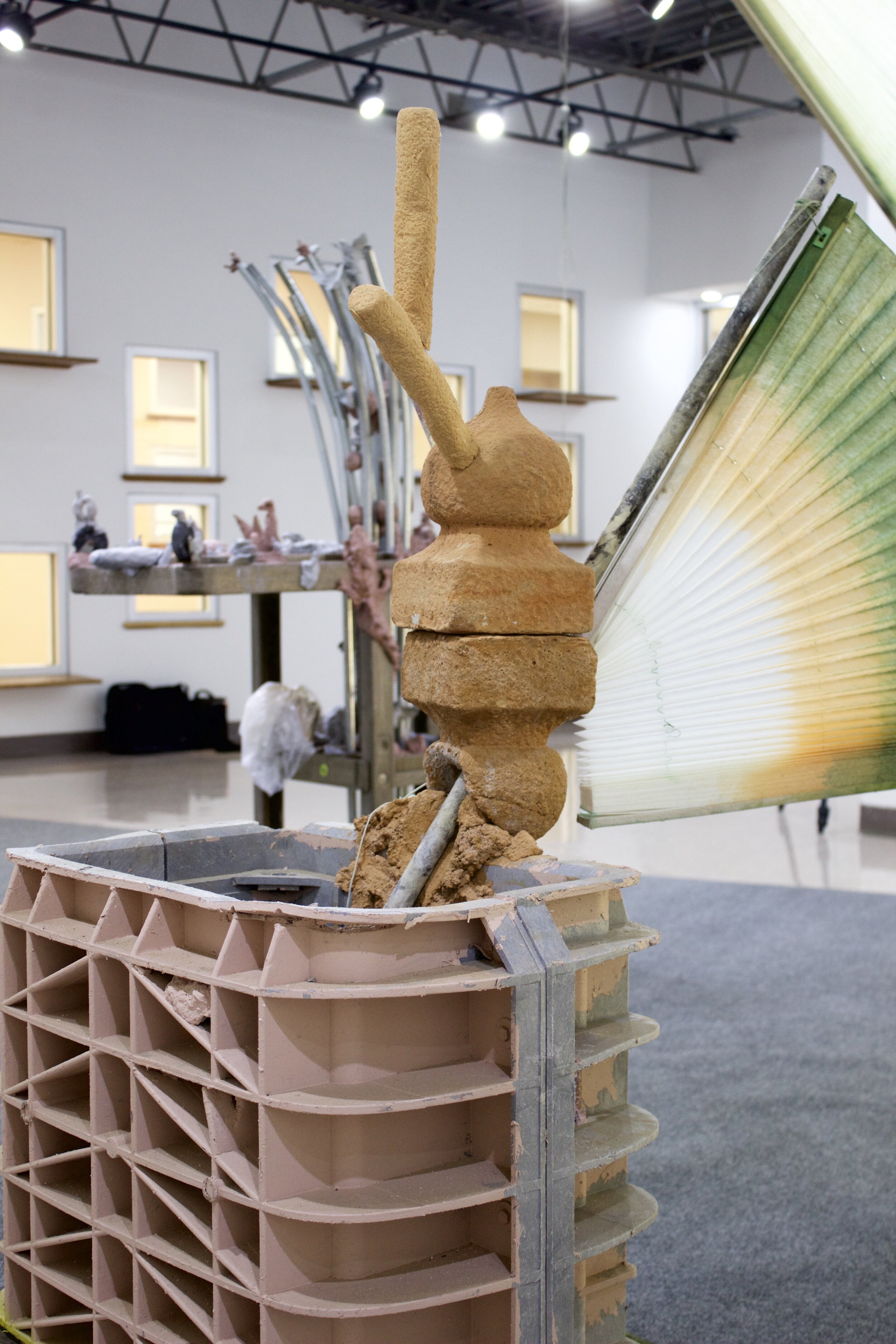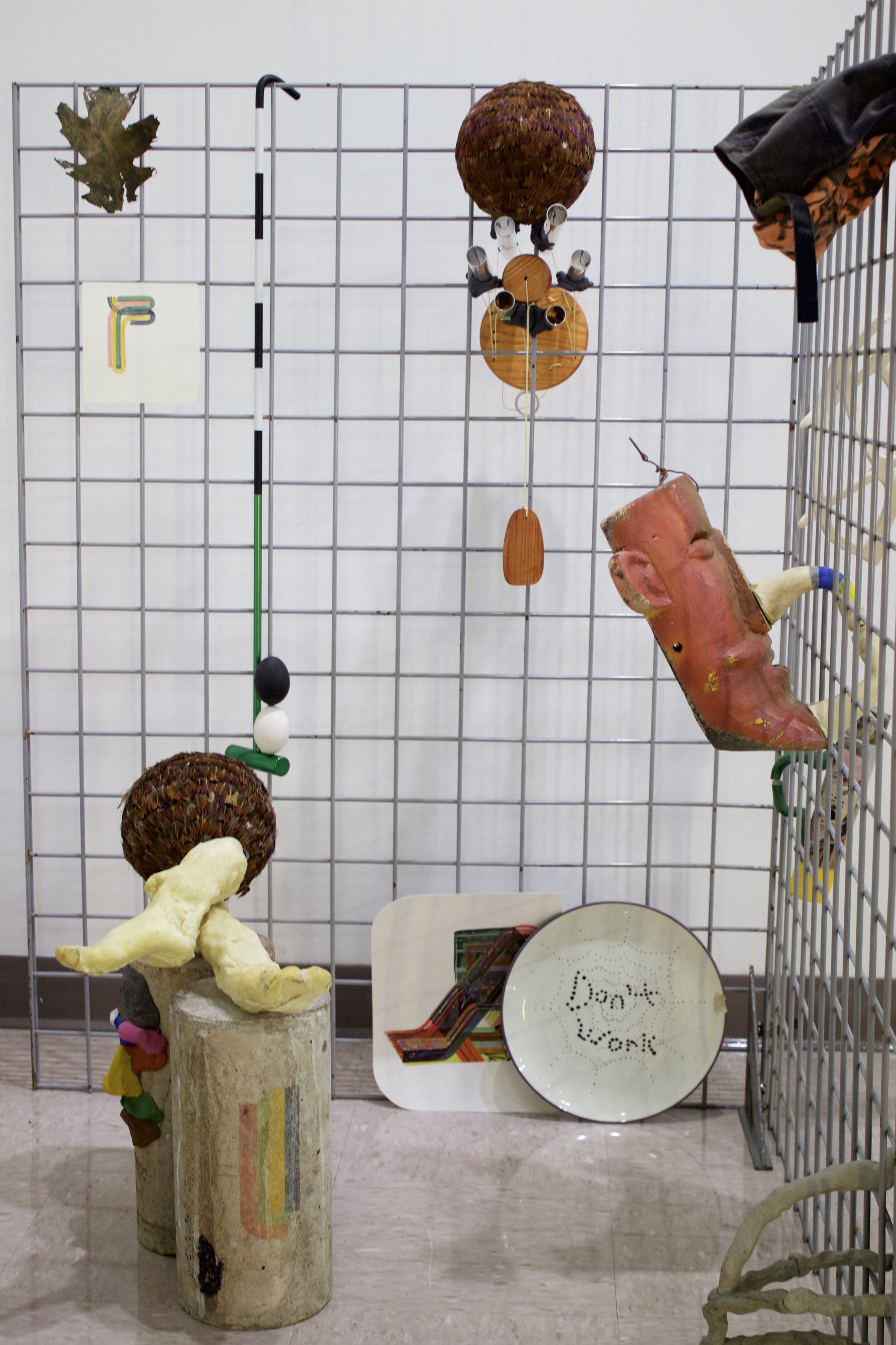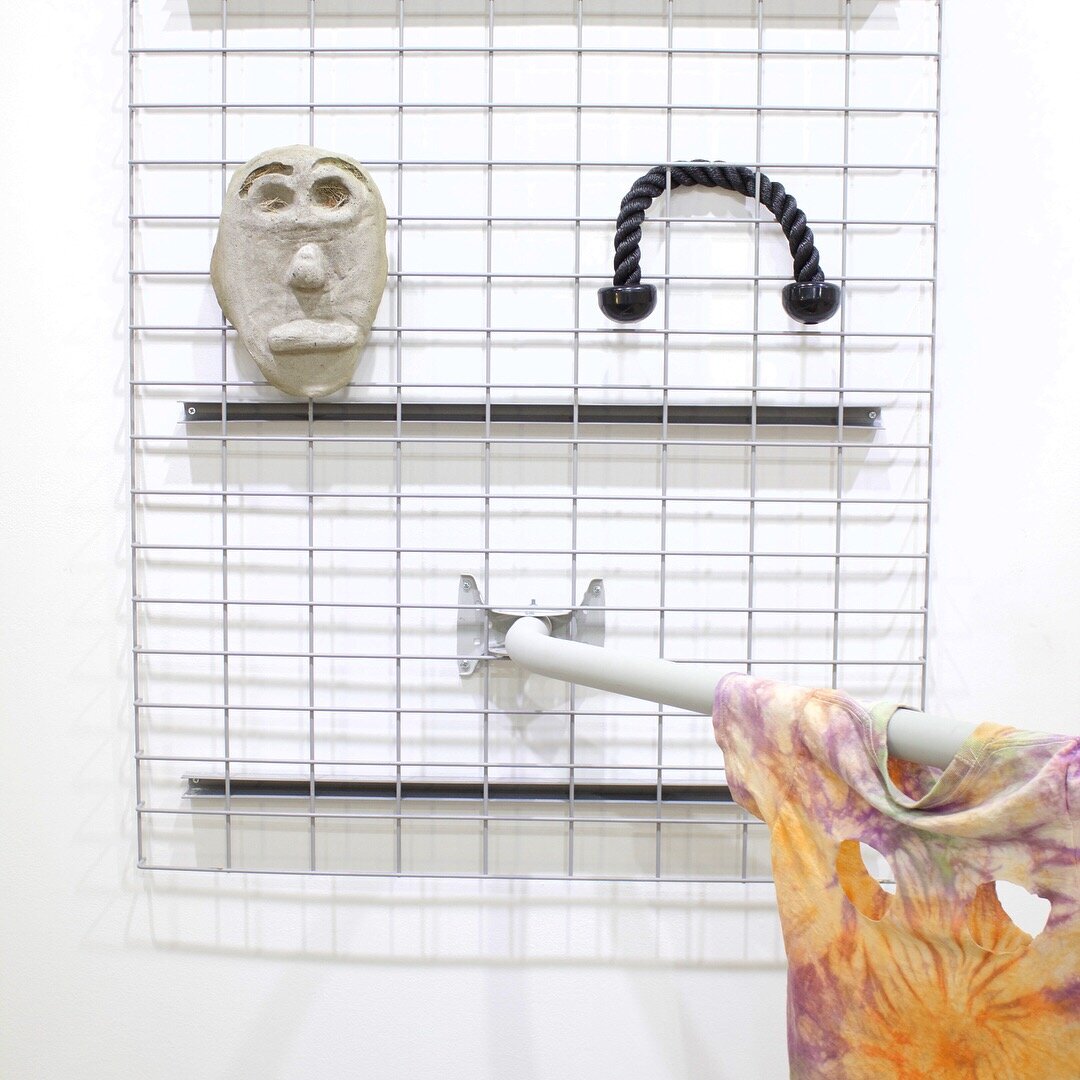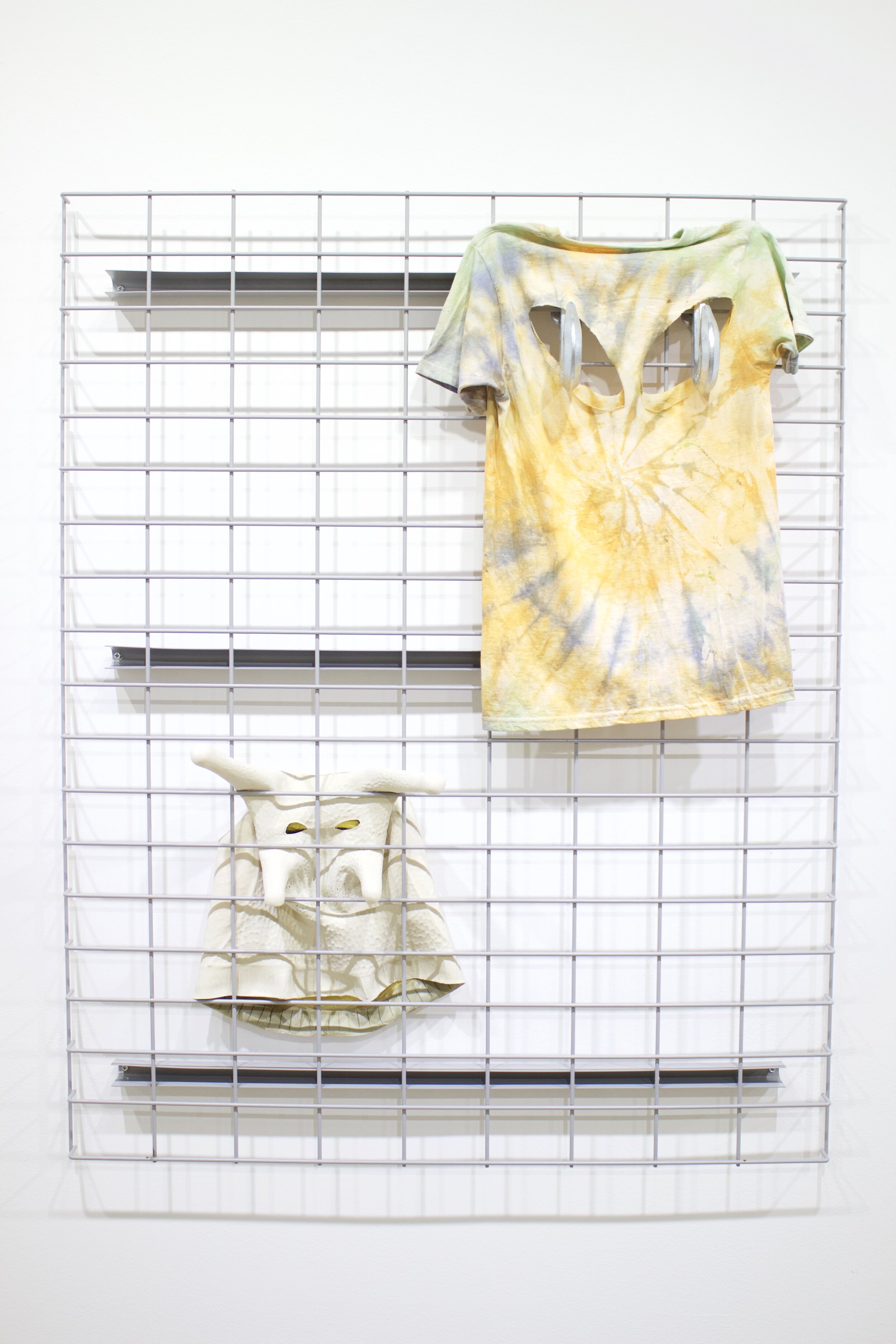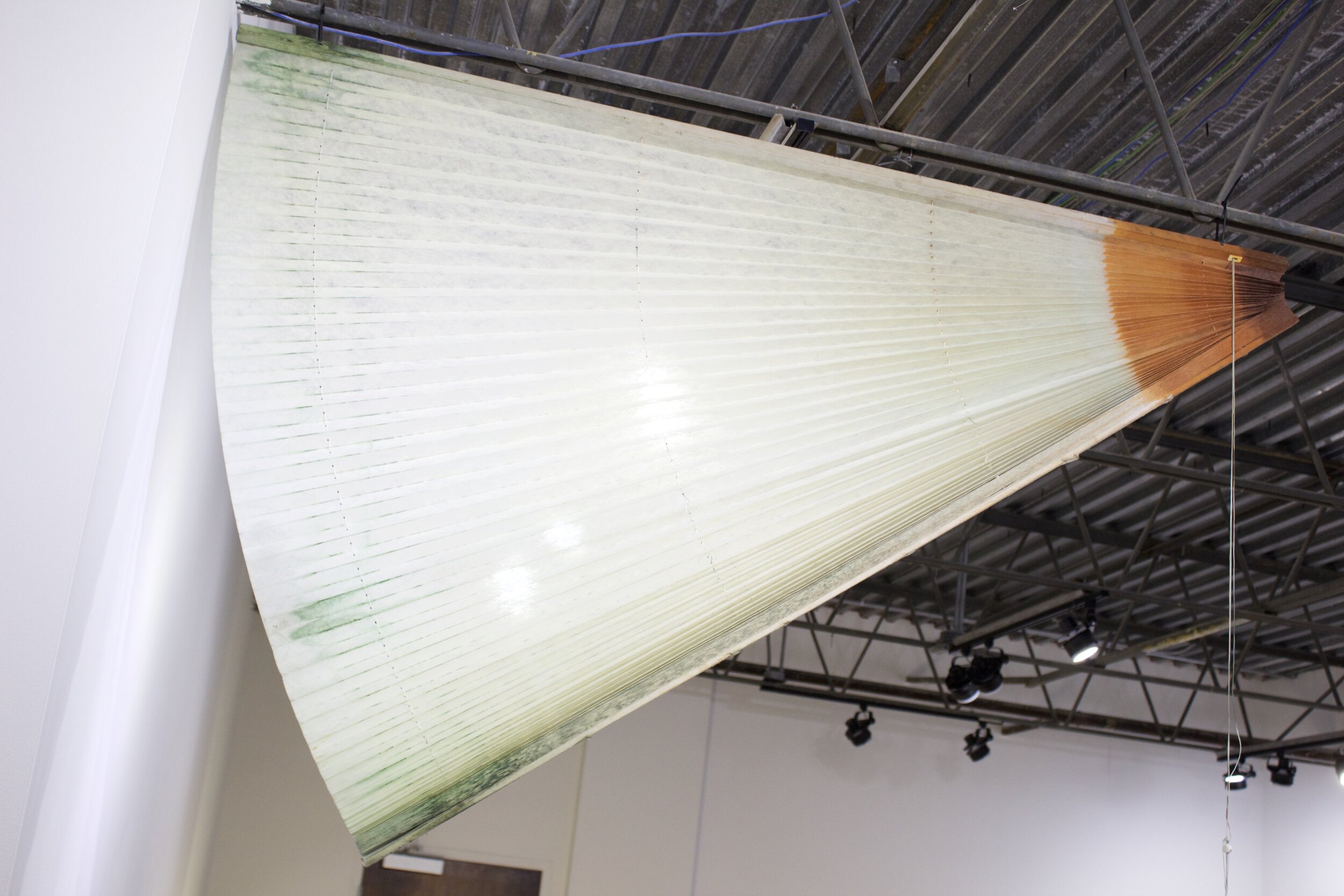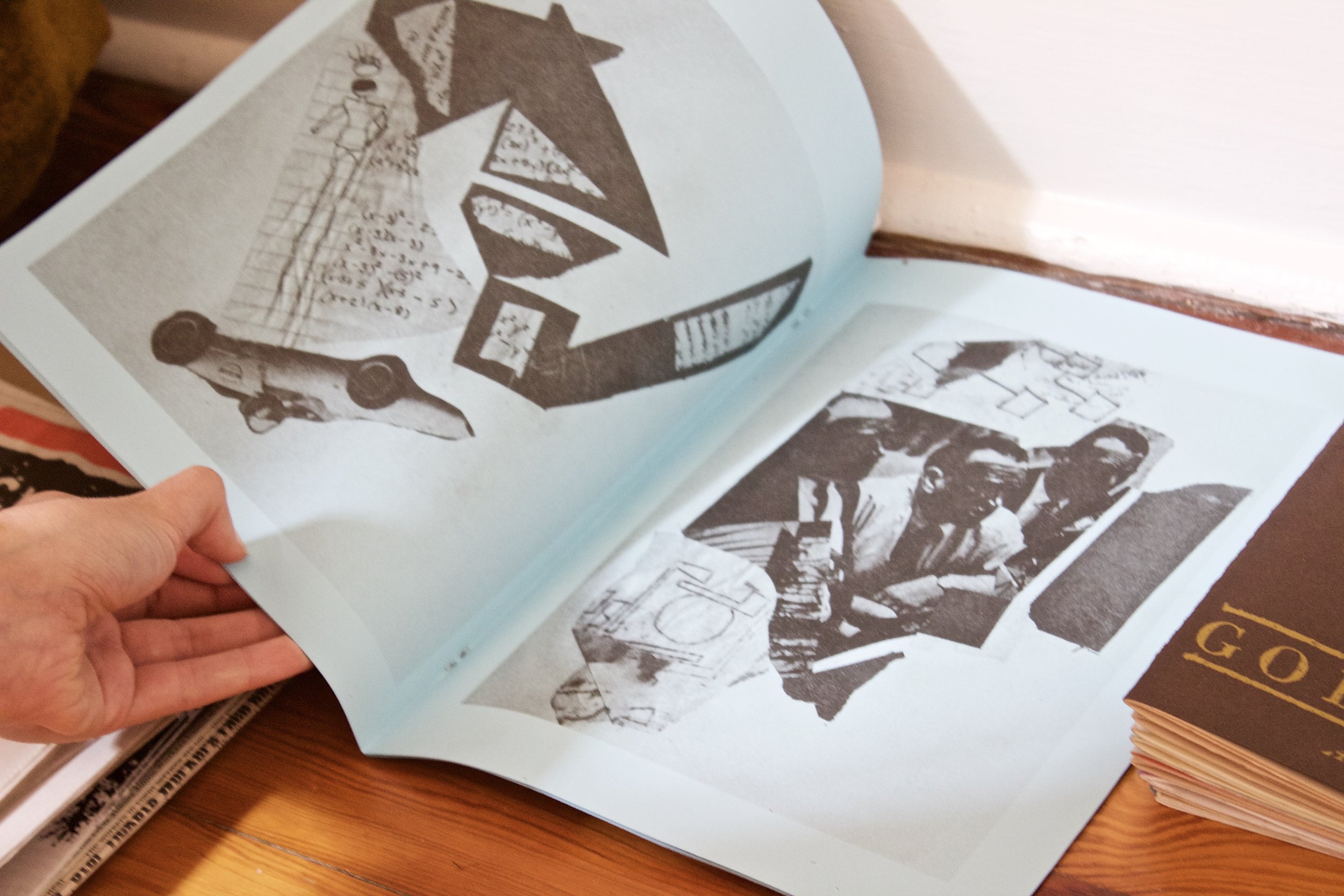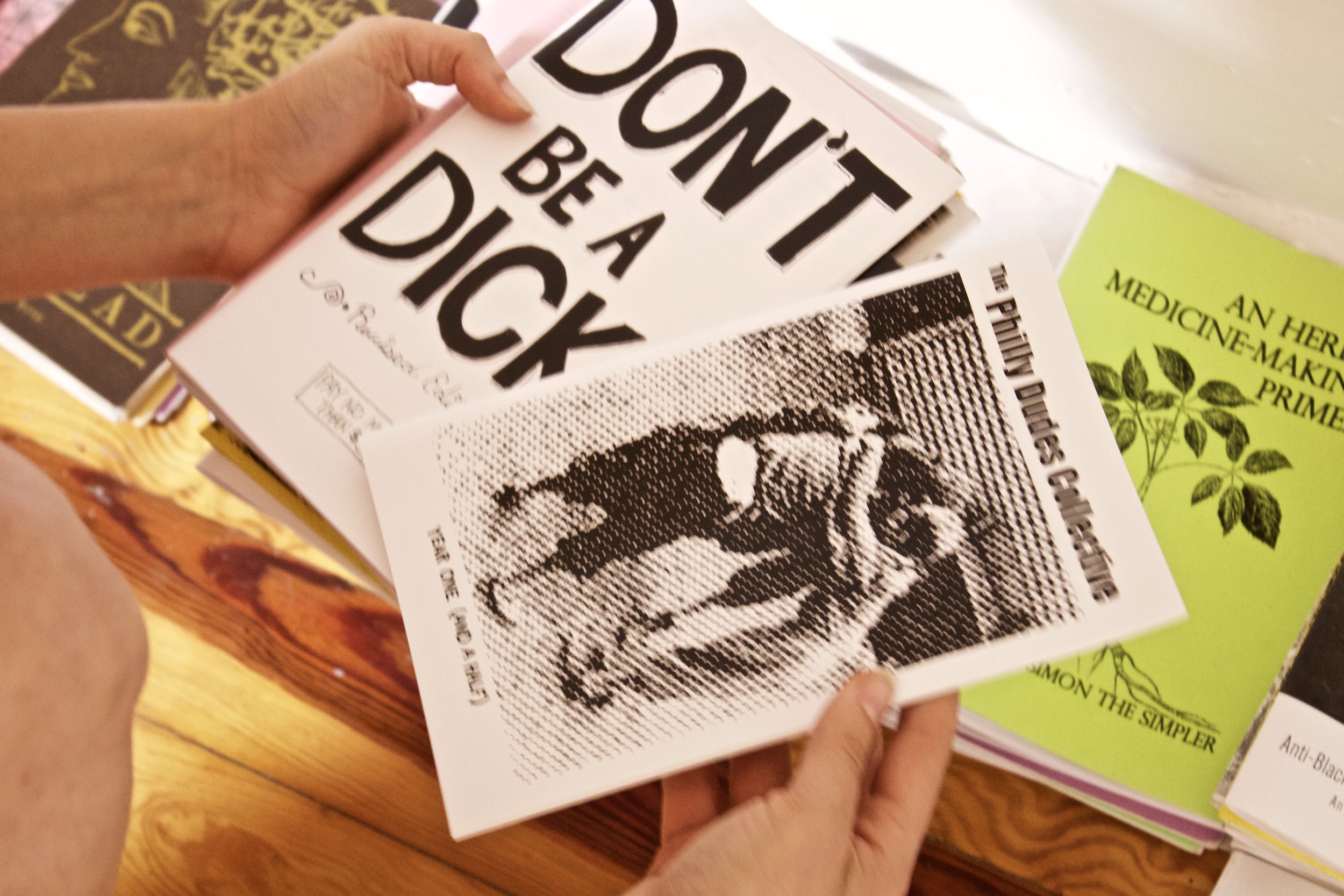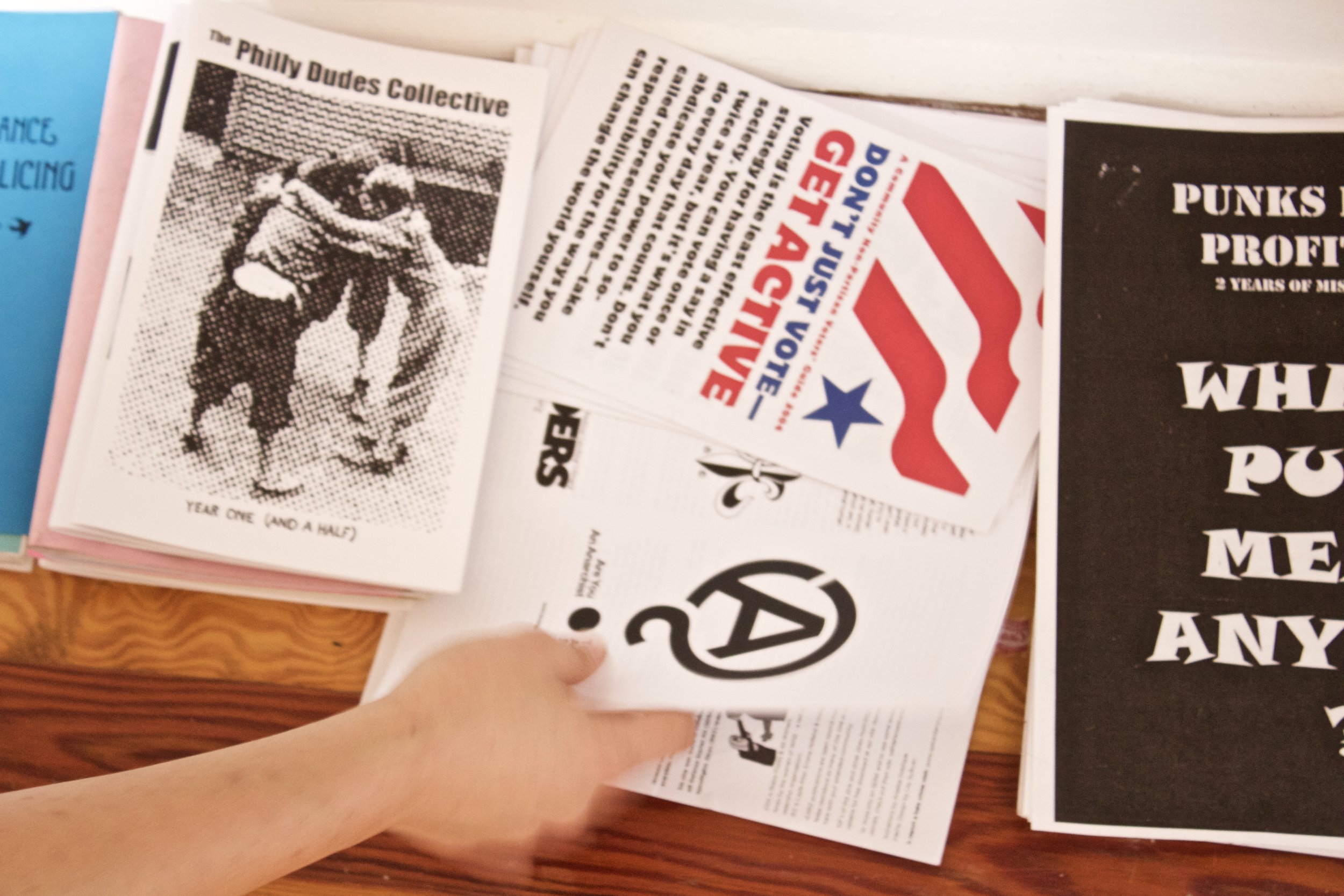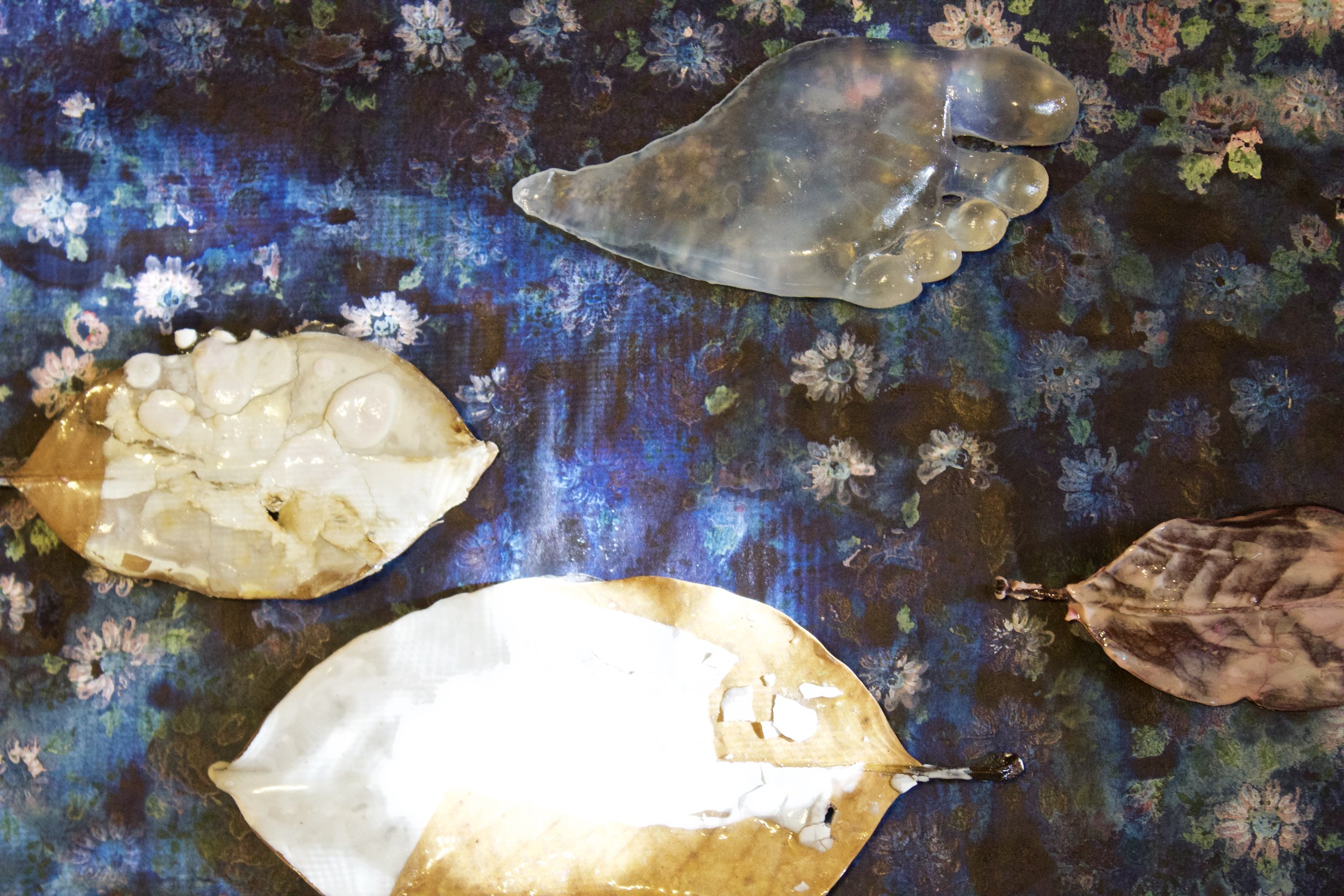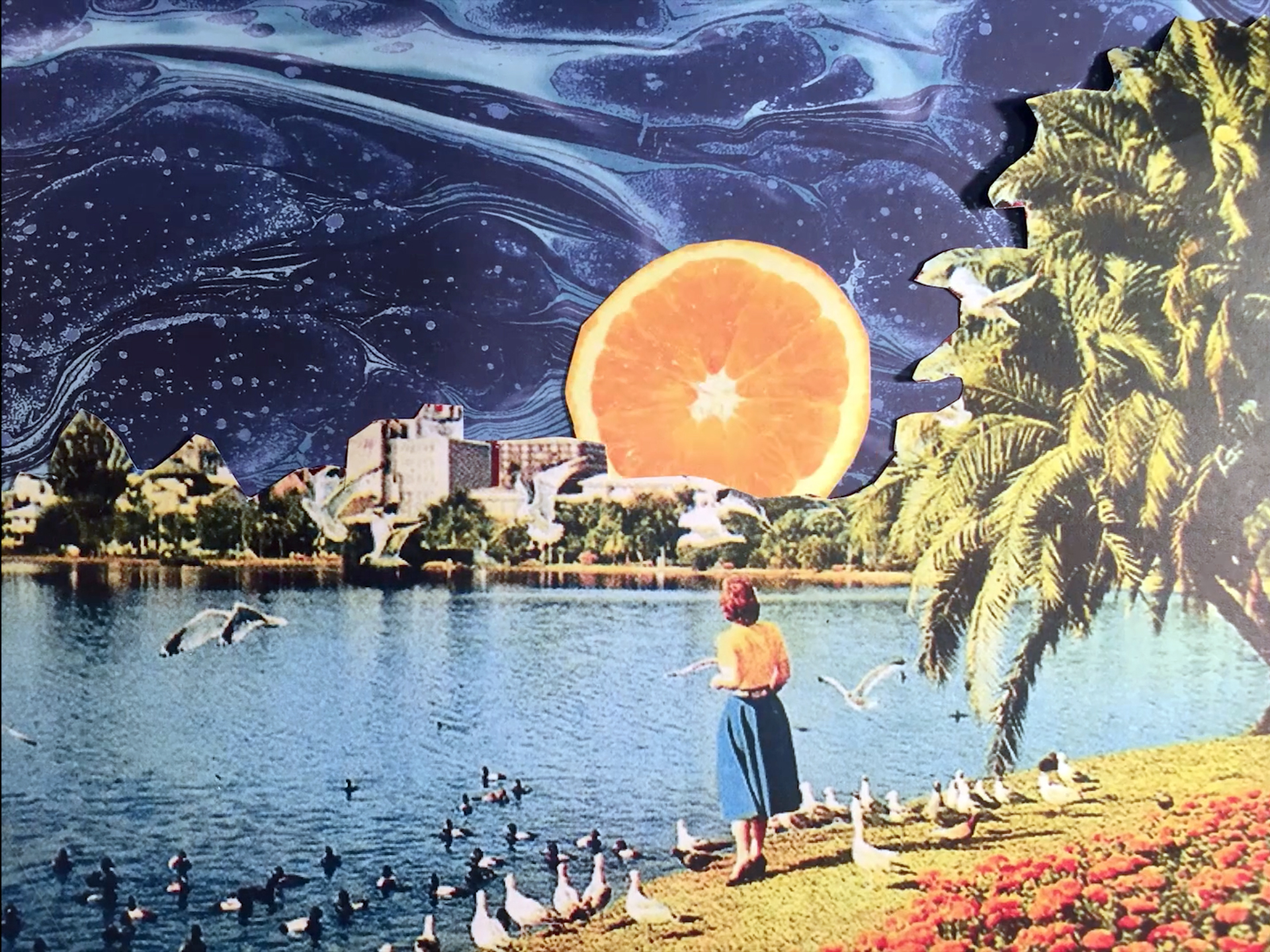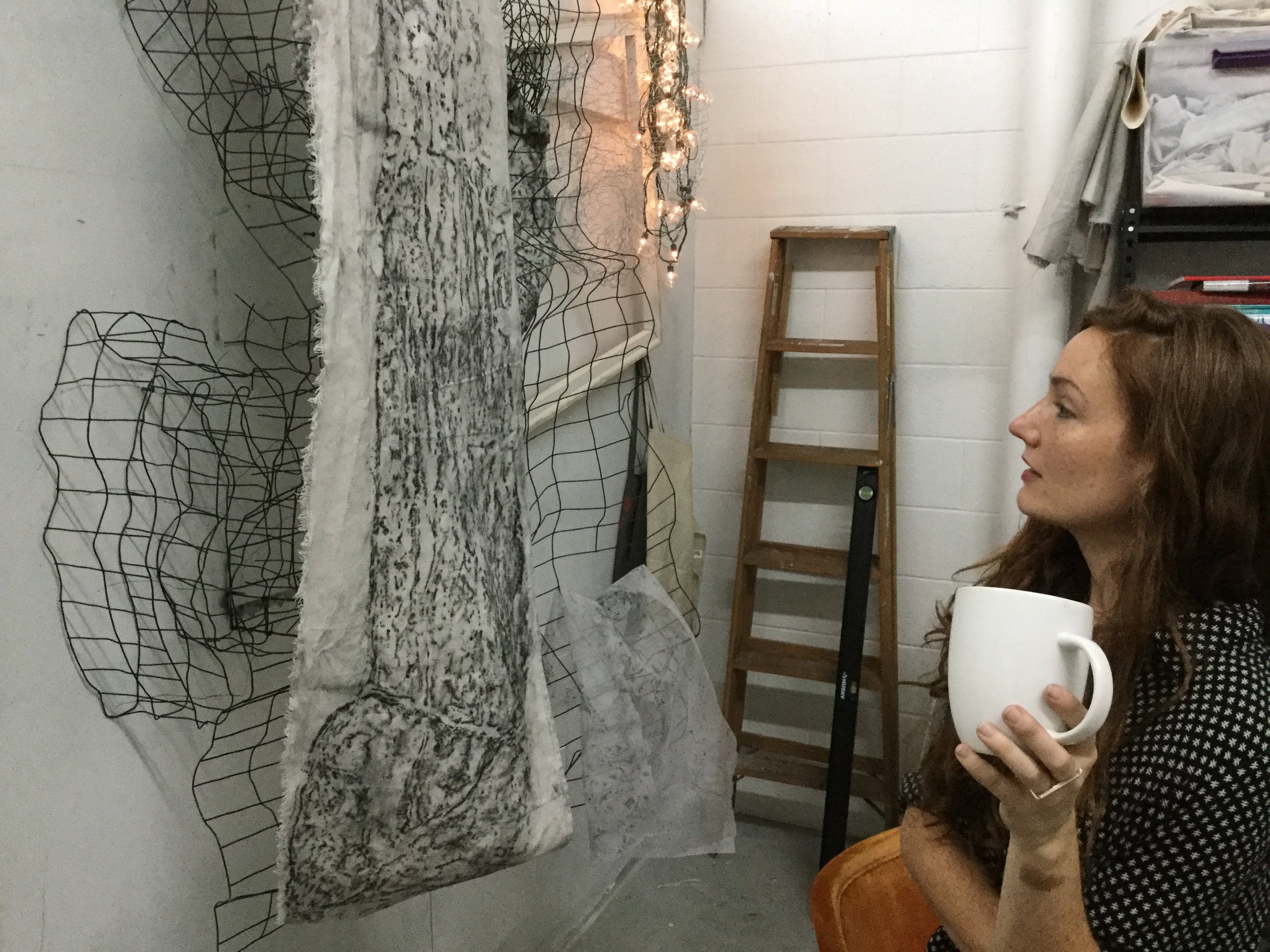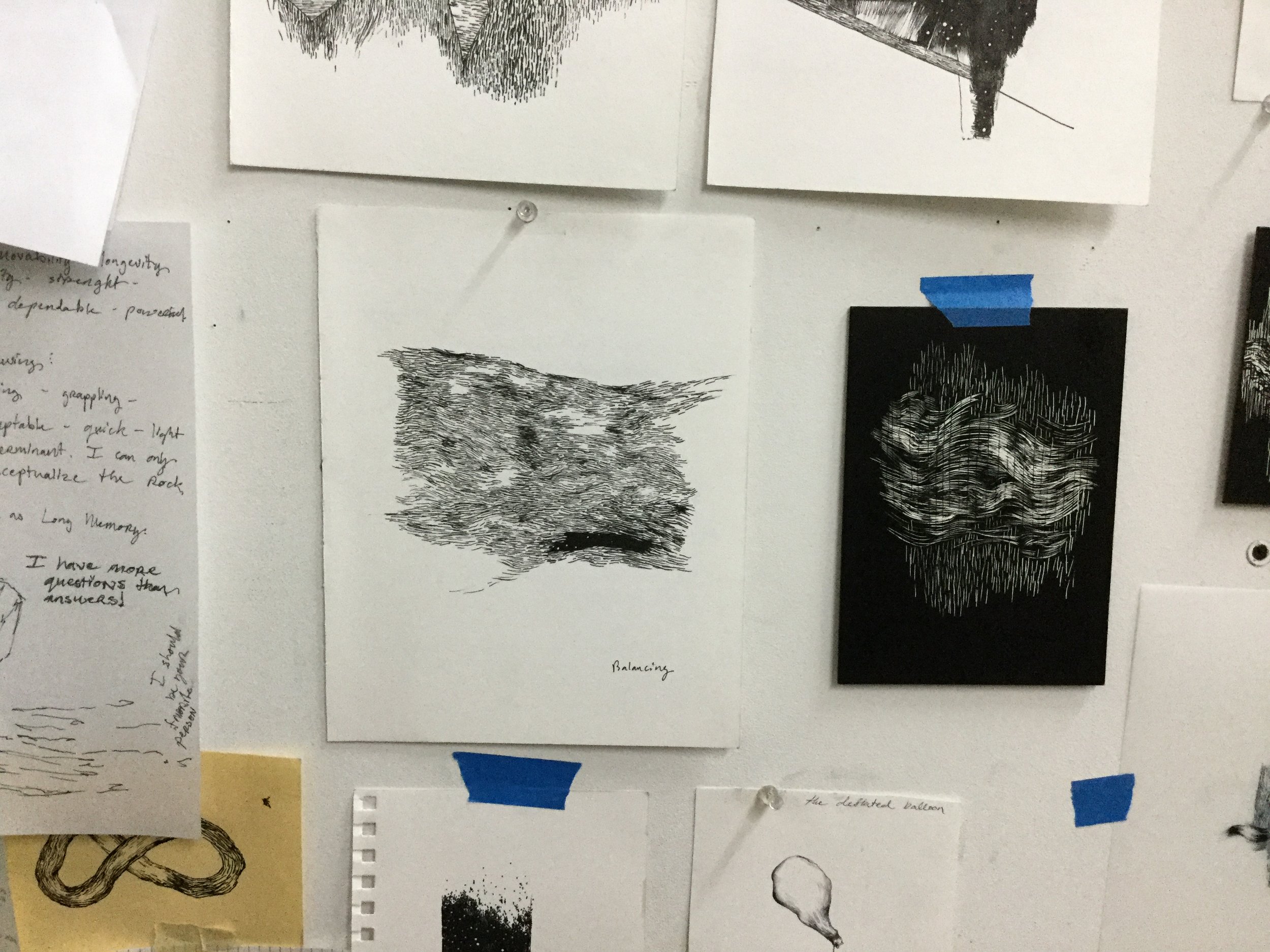Artist Austin Reavis describes finding motivation and materials to work with in his interview with Jonathan Lisenby at the site of flotsam, jetsam, lagan, derelict in Sewannee, TN.
Jonathan Lisenby: Of all media available to collect and distribute, why did you choose zines? How do zines facilitate your mission?
Carly Blaine: I would love to start by defining a zine as a small-circulation, self-published, and often inexpensive or free work made by either an individual or collective. I began collecting zines a few years ago, on my own accord and in relation to my own fascination with the various content available from this medium. I am very much in love with the accessibility aspect of zines, both from the perspective of the author and audience, and that is what I believe facilitates my mission with the zine library project. It is my goal to make both conversations of important social topics, as well as the work of participating artists, as accessible as possible to those who wish to self educate or experience the works without any barrier to entry.
JL: A large portion of the Nashville Public Zine Library is made up of works promoting ‘anarchic’ OR far left ideologies - two fairly opposing viewpoints. Do you think there’s a reason for zines to naturally drift to extreme political poles, or is this a feature of your curation?
CB: I wouldn't quite say that these works promote these ideologies as much as I would say that they are from the perspective of individuals or collectives who embody these ideologies, and converse on such from a humble and robust perspective. Although some of these works seem like propaganda in nature, most of them are well argued on both sides of the political spectrum (anarchic to left-leaning that is), and offer well-rounded arguments on the social topics they center on. Zines do naturally tend to embody strong opinions when they are discussions on social topics and issues faced in given socio-political circumstances, and do tend to be either left-leaning or anarchic; though I do intentionally select works for the library that I believe will be useful resources and materials for the community to use as a basis for conversation within itself.
JL: What skills are most important to have to be a successful zine-maker? Is it required to have gone to art school, or helpful to have a background in journalism?
CB: As I mentioned above, what I love most about zines is the accessible nature of them, both in terms of authoring and experiencing them. One need not have a formal education in order to create a zine, one must simply have an idea and a pen and a piece of paper and a zine may be born.
JL: Which of the zines in your collection would you recommend as starter zines, to recommend to someone new to zines?
CB: It all depends on what an individual has interest in! There are many different areas of specificity, or "genres", within the library for one to choose from. In terms of local works, I would suggest starting with anything from Sabotka, Ursus Press, or Broadside Print, to get a scope of the literary genius that exists in Nashville. I often find that the visual art and music scenes eclipse some of the great poets and writers that live and work in the scene.
JL: How do you bring the NPZL to the public? Do you have bigger plans for the future?
CB: Though this project has been fairly small scale since its inception, I am incredibly excited to be working with new supporting partners and collectives to bring out the library itself to engage with the community! I wish I had more details to share publicly, but as certain intricacies have still yet to be ironed out, I can't divulge any further information. BUT I can say that I have been overwhelmed with support and interest in the project thus far, and that I am looking forward to bigger plans in the future! I would also like to mention that I'd truly love to meet with any individual looking to collaborate, to get involved in some way, or even just to share thoughts and opinions on the creative community itself! I can be reached at nashvillepubliczinelibrary@gmail.com (:
Jonathan Lisenby: From looking at your studio setup, it looks like you use a wide variety of materials and employ painting, printmaking, sewing and sculpture - sometimes all in a single piece. How do you choose your materials?
Alexandra Jo Sutton: Exploration of materials is an extremely important part of my practice. When I get an idea for a piece/series/exercise, I often begin by experimenting with a wide variety of materials and see how the idea manifests itself in different ways with different mediums. Practical thinking, problem solving, and trouble-shooting are important as well. But my practice is very fluid and experimental by nature, so nothing is really off the table. I’m always playing with new ways to use things I’m familiar with, and how to incorporate new media. I think my open relationship with material is an important way that I continue to expand my visual vocabulary and build texture and tone in my work.
JL: How did you come to use the cyanotype technique that produces these blue-tinted prints? Is there specific meaning illustrated by this particular process?
AJS: The blue is the result of mixing traditional cyanotype fluid correctly. Blue is a very important color in my work (often signifying distance, desire/longing, physical and temporal separation, etc.) However, sometimes I’ll play with the mixture and formula to make the prints seem more green or yellow... the surface or ground for the cyanotype fluid is also experimented with... it pools, spreads, or bleeds differently on gauzy fabric than vintage wallpaper. This ties back into that experimental part of my practice and an intuitive response to material. The “specific meaning” behind using cyanotype is really about crystallizing the silhouette of one moment in time. The cyanotypes can take several minutes of exposure to capture an image, so I look at them like these documents marking a more tangible span of time than just taking a regular photo.
JL: Natural forms of detritus and cast-offs, like leaves, shells, twigs, and footprints find their way into your work. How do these visual symbols relate to memory and the ephemeral, in your more recent work?
AJS: I like to call these detritus objects “artifacts” because they each embody a history, and have somehow found their way to me. They are artifacts that embody a memory of their own past, their eventual journey into my studio (closed to me as the details of that origin may be). These objects are fragile, change over time as they die, shrink, warp, disintegrate, and are meant to maintain the ephemeral quality that all living beings share. In another way, many of these artifacts, like the Magnolia leaves, represent specific personal memories for me... pointing to different moments and sensations from childhood that are themselves shimmering fantasies of ephemerality. The cast hands and feet are more about the indexical... the marks that living things leave behind on their environment, that people leave within one another.
JL: Some of your resin and clay castings seem to explore the difference between a figure’s exterior and ‘interior’ - for example, the resin casts of your hands, and the clay casts of the space between your fingers. What is the relationship between these two modes?
AJS: As I mentioned before, I like to think about the indexical, impressions we leave behind as we move through time from birth to death. I started thinking a lot about fossils, trilobites, plants, extinct species, the hollow shapes of bodies found in Pompeii, etc., and how many different ways that bodies can take up space, or become cavities. I started playing around with shapes my open or closed body can make, positive/negative, exterior/interior, and using plaster, clay, and resin as a way to document those spaces.
JL: Instead of producing a single, rectangular image, like a traditional painting, you cluster sculptures and images on the wall or the floor. Sometimes you re-use the same sculptures and images in different configurations to make new pieces. What is your thought process when making this type of work?
AJS: My thought process is always based in creating visual relationships that express what I feel that I need to say in a given moment. When preparing for and installing an exhibition, there is a lot of intuitive responding to the exhibition space to accommodate for fluctuations in those visual relationships. I like to think of my studio practice as fluid, among materials, ideas, and that includes fluidity of presentation in an exhibition space. I also like to set up small, sometimes hidden moments in the work that it takes a few minutes to discover. By being flexible with how I curate the work, both myself and my audience are constantly able to see the things I make in new or different ways - just like how a memory may be an image of one moment in time, but that image changes each time we recall it.
Image: Colleen Phelps from ozartsnashville.org
Jonathan Lisenby: MusiCircus is a John Cage piece. Arguably, the most well-known John Cage composition is 4’33”, the performance piece where a pianist is instructed to, essentially, not play music for four minutes and thirty-three seconds. Is MusiCircus similar?
Colleen Phelps: It’s really the opposite. The other end of the spectrum from no noise at all, being everything all at once. There is much less structure. Four minutes and 33 seconds has movements and sheet music, 'music circus' is more of a concept. There is no sheet music, though it is listed in the John Cage works archive.
JL: How did you choose the musicians and artists, etc. to collaborate with you on MusiCircus? Is this different from how you normally approach collaboration?
CP: We had an open submission process for several months. I would say it’s different from how I generally choose collaborators, but I’m certainly no stranger to open submission. My chamber music group Sound Riot held an open call for scores two summers ago.
Once we compiled all the submissions and felt like we had enough to fill the event I started plotting out a timeline. I had planned to use the entire 5 acres of the OZ Arts venue. But predictions of thunderstorms made us a rework it and only use three areas.
“It’s definitely something where you have to attain control by letting go. You cannot micromanage it. Every time you do you step away from the concept.”
JL: How much control do you exert as the ‘conductor’ of the MusiCircus ‘orchestra’? is it actually a free-for-all, like the advertising implies?
CP: It kind-of is a free-for-all. Control would be exerted when an artist goes over time and someone needs to come in to that space. But the control itself is coming from the other artists, not from me. While I haven’t asked for specifics from artists, I have asked that the content stay appropriate for families, and that they be mindful of noise level. It can overlap, but we don’t want it to become grating. I hadn’t thought of it as an orchestra before now but I certainly see the metaphor. It’s definitely something where you have to attain control by letting go. You cannot micromanage it. Every time you do you step away from the concept. Plus part of the fun is trusting each individual artist or group to do their thing the way they know how to do it best.
JL: Do you think your background as a percussionist influenced you in any way in developing your personal vision for this performance of MusiCircus?
CP: Absolutely. It left me with a strong background performing the music of John Cage, as did my dance background. Two things that definitely go hand in hand. Plus, as a percussionist, you certainly learn to stretch your definition of what a musical instrument is and how to experiment with sound. Some of the things we combined in terms of placement may not have been intuitive, but I think they’ll work. And if they don’t, we all enjoy the conflict for a few minutes and then move on.
JL: Who is the intended audience for this piece? Who do you think would get the most out of it?
CP: The person who is interested in contemporary arts, and wants to see a favorite group plus others from Nashville, is a great audience for something like this. Or even the person who doesn’t know if they’re interested in following contemporary arts, because this gives a good sampler of the kind of art people are making in town. The person who has only followed classical music and only knows it from the symphony will see at least one symphony musician they’re familiar with, but she’ll be hanging upside down while she plays the violin. That’s a good metaphor for the whole thing, traditional arts turned upside down.
MusiCircus Performers:
Ben Andrews | Laura Bouffard | Box O’Theater | Chinese Arts Alliance of Nashville | Alexis Colbert | Joshua Dent | Ted Drozdowski | Deidre Emerson | Alicia Engstrom | Epiphany Dance Partners | Frame Drum Wisdom | Xandra LeeLord Goldie aka Karizma | Kyle Numann | Graci Phillips | Poetry On Demand | Lorne Quarles | Taylor Raboin | Beth Reitmeyer | Bayard Saunders | Jane Saunders | Secret Friends | Strings of Saturn | Suspended Gravity Circus | Tank615 | The Gray Area | The Porch Writers’ Collective | The Weird Sisters | This Holding (Jana Harper) | Emily Tyndall | David Weinel | Whites Creek High School Percussion Ensemble
Visit www.ozartsnashville.org/musicircus/ to purchase tickets. Oz is located at 6172 Cockrill Bend Circle, Nashville, TN 37209. Performance runs May 17th, 6pm to 8pm
John Warren is a filmmaker and educator based in Nashville, TN. He earned his BFA from Emerson College and his MFA from California Institute of the Arts and currently teaches video and film courses at Vanderbilt University. He often utilizes a Bolex 16mm film camera as a method of letting the technical boundaries of the medium create, what he calls, "an organizing structure" and flow for his film-making process. See more of John's work with Wildwood productions at www.johnwarrenfilms.com
Jonathan Lisenby: Which 5 films/videos should everyone see before they die? Which 5 films/videos do you think your students need to see before they graduate?
John Warren: A few touchstones that have been inspirational to me—the psycho-trance cinema of Maya Deren, the hand-painted abstractions of Stan Brakhage, the flicker films of Paul Sharits, the optical wizardry of Pat O’Neill, and the psychedelic ethnographies of Ben Russell (who happens to have a film in Far Out).
"LetYourLightShine", Image courtesy of FAR OUT FILM FEST
JL: Is there a festival or institution that you feel FAR OUT takes inspiration from?
JW: In the beginning, we looked to Milwaukee Psych Fest and Austin’s Levitation for inspiration. This year, FAR OUT NASHVILLE has expanded beyond music and art to include a podcast and a film festival. Cinematically, we show work in the same underground spirit as Experiments in Cinema, Ann Arbor Film Festival, Other Cinema, or the defunct PDX Film Fest, just to name a few.
Still from Lauren Ballejos' "My Crazy Ex-Boyfriend", image courtesy of FAR OUT FILM FEST
JL: What are you looking for the most when watching video and film submissions to FAR OUT FILM FEST?
JW: We are excited about films that present physical voyages, psychedelic journeys, or a phenomenological experience of the world. We look for films that offer new ways of paying attention, new ways of understand, and new ways of thinking and feeling.
Image courtesy of FAR OUT FILM FEST
JL: Does the idea of Nashville specifically interact with FAR OUT? Could FAR OUT happen in any city, similarly?
JW: Nashville will always be Music City, but it is also home to a thriving alternative art scene and a burgeoning film community. The cultural atmosphere of Nashville is unique enough for a psychedelic music and film festival to take root in a way that would not be possible in other cities. Third Man Records is a testament to the city’s creative evolution, and has previously presented marginalized cinema in the intimate Blue Room, which is also the venue for the FAR OUT FILM FEST.
"No.7 Badlands", image courtesy of FAR OUT FILM FEST
JL: How do you approach collaboration with an artist of another media, like musicians, actors, or choreographers, for example? How do you approach limits of control?
JW: Collaboration is about finding the places where you overlap, then moving deeper into that territory. Film/video, music, acting, and choreography all have their own language. When collaborating, it’s like working together to invent a new language. Film/video is a time-based medium, so pacing is very important. Sometimes there are beautiful accidents, other times there are minor train-wrecks. Giving up complete creative control can be stressful, but sometimes much more rewarding than just moving around inside my own comfort zone.
FAR OUT FILM FEST happens at The Blue Room at Third Man in Nashville, 623 7th Ave. S., Thursday, May 10th 8-10pm. FAR OUT NASHVILLE music and art fest continues on Friday and Saturday, May 11-12, at Mercy Lounge and The High Watt. Visit https://www.faroutnashville.com for more info on admission and to purchase tickets.
Ciona Rouse just celebrated the release of her book of poems, Vantablack, the first poetry chapbook published by Jack White's Third Man Records. Painter Jonathan Lisenby sits down with Ms. Rouse at her favorite writing spot in East Nashville, a tea parlor, to address her new book and the growing poetry scene in Nashville. Instead, they discuss reading with your body, being "quick" on twitter, locking yourself in the trunk of an old car, and habitual narcing, among other things. You can preview and purchase Vantablack, through Third Man Records, here: https://thirdmanbooks.com/books/vanta/
Omnifold artist and curator Jonathan Lisenby sits down with East Nashville-based painter Marlos E'van to discuss his large canvases and his, then, upcoming solo show, Dyin' By Tha Gun. They talk about painting as therapy, asking permission to work large-scale, the Great Dierks Bentley Barbecue, and eating Big Mac cheeseburgers, among other things.
Erin Murphy is a painter and sculptor based in Nashville, TN. This audio interview was recorded in her studio at Ground Floor Gallery + Studios in the Wedgewood-Houston area. Curator Jonathan Lisenby sits down with Erin to talk about growing up in a creativity-quashing environment, rubbing gravestones, and becoming Xena: Warrior Princess, among other things.
David Onri Anderson in his basement studio in the Wedgewood-Houston area of Nashville, 2017.
David Onri Anderson shows Omnifold curator Jonathan Lisenby around his basement-studio-gallery in Wedgewood-Houston, Nashville. They eventually sit down outside to look at paintings arranged on the ground. They talk about color's relationship to spirituality, Nashville's arts cultivation problem, living simply as a practice, and the skink being the spirit animal of the conversation, among other things.
Kelly S. Williams is a painter and educator and is currently based in Nashville, TN. She earned her BA from Vassar College and her MFA from SAIC in Chicago. She is represented by David Lusk Gallery and often exhibits with her old mentor, painter Michelle Grabner, at the arts project space The Suburban.
Artist and Omnifold curator Jonathan Lisenby sat down with Kelly in her Germantown home-studio to talk about adjusting to life after art school, the peculiar mysticism of the South, the effects of Nashville's recent intense gentrification on artist spaces, and the tondo versus the mandala, among other things.
Still from video "Apartment", 2016
Claire Stigliani is a painter, sculptor, and video artist currently based out of Knoxville, TN. She began teaching painting and drawing at University of Tennessee, Knoxville in 2014 and previously taught at Carnegie Mellon University in Pittsburgh. Among other distinctions, Stigliani received a Joan Mitchell Foundation grant in 2015 to begin work on her most recent series, Half Sick of Shadows - work that this interview attempts to address.
